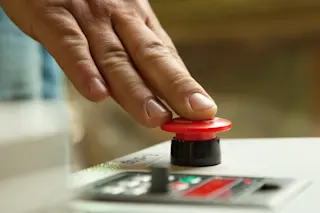All day every day, throughout the United States, people push buttons – on coffee makers, TV remote controls and even social media posts they “like.” For more than seven years, I’ve been trying to understand why, looking into where buttons came from, why people love them – and why people loathe them.
As I researched my recent book, “Power Button: A History of Pleasure, Panic, and the Politics of Pushing,” about the origins of American push-button society, five main themes stood out, influencing how I understand buttons and button-pushing culture.
In the late 19th century, the Eastman Kodak Company began selling button-pushing as a way to make taking photographs easy. The company’s slogan, “You press the button, we do the rest,” suggested it wouldn’t be hard to use newfangled technological devices. This advertising campaign paved the way for the public to engage in amateur photography – a hobby best known ...














